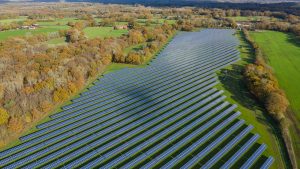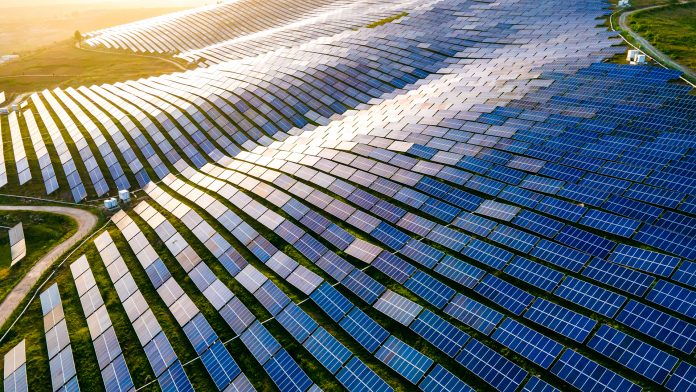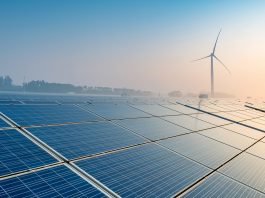Researchers are exploring ways to exploit the geometry of solar plants to enhance natural cooling mechanisms.
It is often thought that a sunny and cloudless day is the optimal setting for solar cells, but too much heat caused by excessive sunlight can actually reduce the efficiency of photovoltaics. Traditional silicon-based solar cells will lose around 0.5% efficiency as operating temperatures rise by 1°C. In a typical solar plant, where modules operate almost 25°C above the ambient temperature, energy losses can reach 12%. It is therefore crucial that effective cooling measures for solar plants are developed.
To aid this endeavour, researchers from Portland State University, the University of Utah, and the National Renewable Energy Laboratory explore how to take advantage of the geometry of solar farms to enhance natural cooling mechanisms.
The article, ‘Viewing convection as a solar farm phenomenon broadens modern power predictions for solar photovoltaics,’ is published in the Journal of Renewable and Sustainable Energy.
Investigating the setup of solar plants
Currently, some cooling methods force wind or water to interact with the surfaces of solar panels, whilst others utilise specific materials with less thermal sensitivity. However, for these techniques to work, significant resources are required. In contrast, a solar plant with optimally spaced panels facing the correct direction could use surrounding winds to cool itself through convection.
The researchers improved models that calculate how much energy a given solar plant will produce based on factors such as material, environmental conditions, and panel temperature. The geometry of solar plants was a specific focus for the team, investigating the gaps between the panels.
“Our hypothesis was that the most precise estimate of solar plant convection, and ultimately production efficiency, must consider the farm as a whole and all possible configuration changes,” said author Sarah Smith, of Portland State University.

It is rare that any two solar plants have the same setup, as each is uniquely designed to optimise solar irradiance and conform to its surrounding environment. For example, solar panels have different heights depending on the vegetation present, the tilt of solar panels changes with latitude, and the spacing of rows depends on the availability of the land.
“This means that the heat-removing wind flow will also move differently throughout each solar plant based on its arrangement, ultimately changing how efficiently heat is removed from module surfaces,” said Smith.
Correlation between geometry and efficiency
Wind tunnel experiments and high-resolution simulations were performed by the researchers, and data was then collected to corroborate their model. The team investigated photovoltaic heating and cooling with variations in module height, row spacing, angle, and wind. They found that raising the height of solar cells and increasing the spacing between panel rows increased power output by 2% to 3%.
“This correlation between geometry and efficiency is a huge step toward predicting convective cooling for solar plants based on their inherently unique arrangements,” said Smith. “It paves the way for more accurate energy generation and cost prediction models in industry.”









